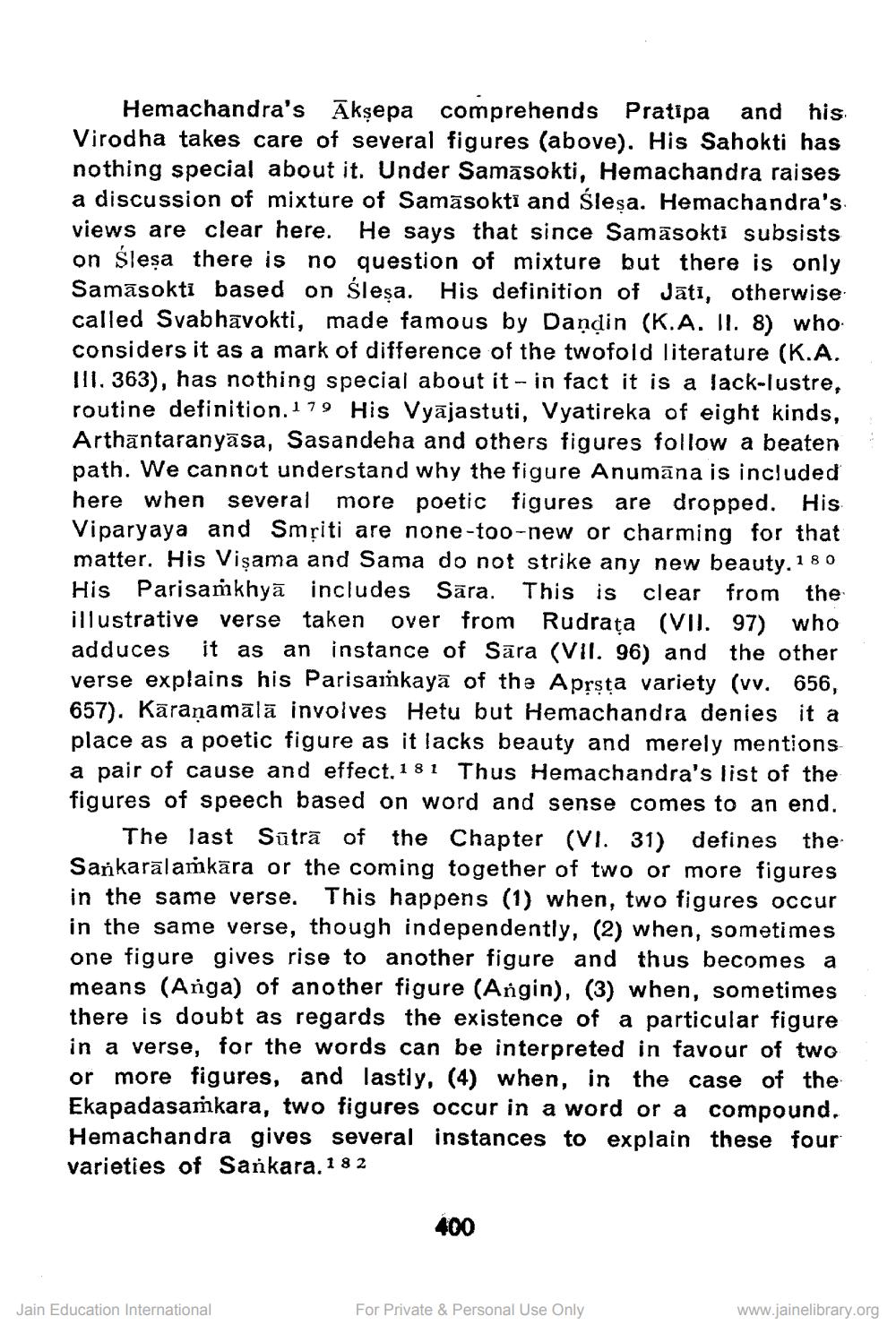________________
Hemachandra's Āksepa comprehends Pratipa and his Virodha takes care of several figures (above). His Sahokti has nothing special about it. Under Samāsokti, Hemachandra raises a discussion of mixture of Samāsokti and Ślesa. Hemachandra's. views are clear here. He says that since Samāsokti subsists on ślesa there is no question of mixture but there is only Samāsokti based on Ślesa. His definition of Jāti, otherwise called Svabhāvokti, made famous by Dandin (K.A. II. 8) who considers it as a mark of difference of the twofold literature (K.A. III. 363), has nothing special about it - in fact it is a lack-lustre, routine definition. 179 His Vyājastuti, Vyatireka of eight kinds, Arthantaranyāsa, Sasandeha and others figures follow a beaten path. We cannot understand why the figure Anumāna is included here when several more poetic figures are dropped. His Viparyaya and Smriti are none-too-new or charming for that matter. His Vişama and Sama do not strike any new beauty.180 His Parisamkhyā includes Sāra. This is clear from the illustrative verse taken over from Rudrata (VII. 97) who adduces it as an instance of Sāra (Vil. 96) and the other verse explains his Parisarkayā of the Aprsta variety (vv. 656, 657). Kāraṇamālā involves Hetu but Hemachandra denies it a place as a poetic figure as it lacks beauty and merely mentions a pair of cause and effect, 181 Thus Hemachandra's list of the figures of speech based on word and sense comes to an end.
The last Sūtrā of the Chapter (VI. 31) defines the Sankarālamkāra or the coming together of two or more figures in the same verse. This happens (1) when, two figures occur in the same verse, though independently, (2) when, sometimes one figure gives rise to another figure and thus becomes a means (Anga) of another figure (Angin), (3) when, sometimes there is doubt as regards the existence of a particular figure in a verse, for the words can be interpreted in favour of two or more figures, and lastly, (4) when, in the case of the Ekapadasamkara, two figures occur in a word or a compound. Hemachandra gives several instances to explain these four varieties of Sankara. 182
400
Jain Education International
For Private & Personal Use Only
www.jainelibrary.org




